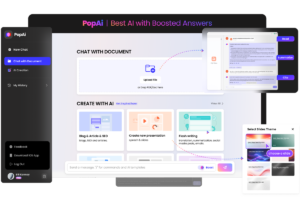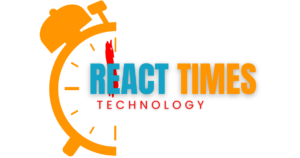Data visualization refers to the graphical representation of information, intended to give viewers a visual framework for understanding complex data or concepts. In corporate settings, data visualization has become an integral part of impactful presentations.
When used effectively, data visualizations allow presenters to showcase data-driven insights, business analytics, and market research in engaging ways that resonate with audiences.
This article will examine the central role data visualization plays in modern presentations, provide an overview of key techniques, and discuss how AI is transforming advanced data viz capabilities.
The Role of Data Visualization in Effective Presentations
Crafting visually-compelling presentations is no longer enough. Audiences expect data-backed evidence to influence their perspectives or decisions. By leveraging data visualization, presenters can make complex information understandable, boost memory retention, capture audience attention, and support data-driven decision-making.
Making Complex Data Understandable
Well-designed data visualizations take abstract, unintelligible datasets and transform them into intuitive graphics that allow viewers to spot patterns, trends, and insights at a glance. Rather than dwelling on the minutiae of numbers, data visualizations highlight key relationships, differences, and findings from complex analysis through simple shapes, colors, and position – eliciting understanding faster.
Boosting Memory Retention
Research shows that visual cues help cement new information in memory significantly better than text alone. Our brains process visual data better. By complementing hard facts and figures with strong visuals, audiences recall presented information more readily. Crafting visually memorable data representations ensures key data-driven insights stick.
Capturing Audience Attention
In the digital age, human attention spans are under siege. On average, a person’s focused attention lasts just 8 seconds. Data visualizations provide a way to cut through the noise and command audience attention by offering intriguing, graphic ways to interact with data. When presentation viewers are confronted with an impactful data visualization, attention becomes riveted, engagement heightens, and essential insights get absorbed.
Supporting Decision-Making Processes
Managerial decisions depend on context and evidence. Data visualizations make statistical data more accessible and actionable by highlighting relevant metrics, patterns, and trends – providing decision-makers with vital visualization support. Rather than handing leaders raw datasets and spreadsheets, purpose-built data visualizations assist their contextual understanding and evidence-based choices.
Exploring Different Data Visualization Techniques
With the right context and design choices, data visualizations empower presentations. But not all data graphics are made equal. Presenters need to select the right data visualization technique for their dataset and audience. Here are four common options:
Utilizing Bar Charts for Comparative Analysis
Bar charts use rectangular bars to compare distinct categories or values. The length of each bar represents the data value, allowing viewers to quickly contrast dimensions like market share, budgets, sales totals, and more at a glance. Bar charts work well for head-to-head quantitative comparisons.
Decoding Information with Pie Charts
When presentation data conveys part-to-whole relationships, circular pie charts come in handy. Their sliced sections illustrate numerical proportion, quantitative percentage breakdowns, and categorical fragmentation effectively. Audiences easily digest what percentage or proportion each data division occupies.
Tracking Trends with Line Graphs
Line graphs showcase data that changes over a particular time interval by connecting plotted data points together to showcase progression. Multiple lines highlight comparative trends across items, categories, or timed-based events. Viewers easily spot upward/downward data trajectories.
Analyzing Patterns with Heat Maps
For location-specific data analysis, heat maps provide color-coded data visualization. Data values determine colored shading intensity. Heat maps elucidate patterns, concentrations, and correlations based on the data variables’ geographic distribution, making them ideal for presentation topics like sales performance, social media engagement, website clicks, and more.
Using AI for Advanced Data Visualization
Beyond traditional data visualization approaches, presenters now leverage AI to create more advanced, interactive data representations to enhance audience understanding and engagement. Known as automated data visualization, an AI presentation generator streamline graphic creation, enable custom visuals, and provide smarter analytical dashboards.

AI tools like PopAi.pro process complex datasets then generate suitable visualizations automatically, reducing human effort. Presenters simply upload data and receive suggested data graphics and custom recommendations best suited for the dataset’s parameters and audience needs, boosting productivity.
Conclusion
Data is exponentially growing. Yet quality data visualization remains a bottleneck for impactful presentations. By mastering data visualization techniques, presenters transform metrics, statistics, and analytics into intuitive graphics that convey clarity, command attention, influence understanding and decisions alike. With data’s central storytelling role today, data visualization mastery represents a core competency for modern presenters.

